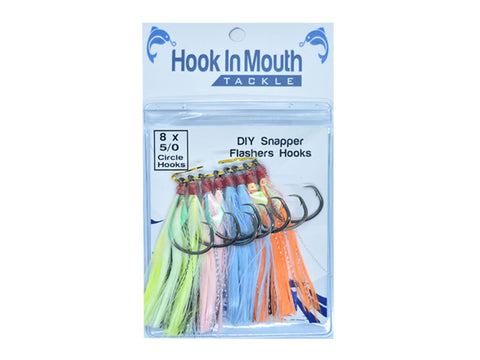
General Snapper Tips
When Snapper first enter the bay they show very little caution, but as they start to settle in they can become harder to hook up. So for the first part of the season try using a running sinker rig, and leave your reel out of gear with the ratchet on.
Most anglers fish this way early in the season without worrying to take precaution such as easing the drag on the reel. Early in the season when the snapper are easy to hook, you can make use of a good size sinker, as they become harder to catch, back down the sinker size or try to fish without a sinker if conditions permit. Just remember to adjust your strategy when the fish become hook shy.
As a snapper angler one of the most frustrating aspects is when a fish goes on a short sharp run and results in the fish releasing the bait. The best way to overcome this disaster is to set your reel to about 1kg of drag, but never lock up the clutch entirely.
Sometimes you will encounter snapper that bite so softly that you would hardly believe that it is a snapper at the end of your rod. During these types of bites you need to adopt a slightly different strategy. Make use of bait runner reel and set your secondary drag to basically free spool and set your primary drag to ensure there is enough tension to hook the fish. Additionally fish with a sinker that is as light as you can or even better, no sinker at all, this will ensure there is as little resistance as possible. If you don’t have a bait runner reel you could always employ a very old technique that will get the job done in these conditions.
Cast out an unweighted bait, give it time to sink to the bottom of the water column, point your rod tip basically as horizontal as you can (Snapper Racks are great for helping to achieve this). Release about 10-15 meters of line and coil it into a bucket next to your rod. Place a small piece of polystyrene on the tip of the top runner, to stop the line drifting out. When you see the polystyrene running into the water you know you have an unsuspecting fish on the other end. It is best to wait until all your line has been taken before striking the fish. By this time the fish should have swallowed the bait deep down into the gullet and should be well hooked.
Obviously the main method when fishing for snapper from a boat is to anchor up and berley hard. However, another great way to catch snapper is to get on the drift. Drifting for snapper is good method if you don’t have the luxury of a quality sounder. Drifting for snapper can be painful at times, as it will drag your sinker and hooks over reef and rocky bottom. This will cause you lost tackle pretty quickly. Also not to mention that your hook will eventually become blunt, bent or broken from scraping on rocks etc. which will result in the loss of good fish.
Drift is caused by a few factors such as strong wind or strong current. The secret to fishing for snapper on the drift lies within fishing with no sinker. This will keep your bait slightly off the bottom and will ensure that you don’t get snagged up or that your hook doesn’t suffer from wear and tear. Bait a whole fish, such as a garfish, pilchard or silver whiting, the angler should cast the bait out and hold on to their rod. The ebb and flow of the water will cause the bait to rise and fall, it will also cause the bait to dart forward which is a natural movement of a bait fish, this is sure to attract the attention of a hungry snapper.
Modern rods make playing the fish pretty easy. The biggest mistake a novice can make is to wind the reel when the fish is taking line, so let the fish run. The other big mistake is using the reel to winch the fish instead of using the rod to gain line, one stroke at a time. It can be a dangerous time when the fish gets up near the angler/craft as the fish will usually have one last run at getting away and will dive down deep quickly. "Let it run"
When choosing your gear for snapper fishing, it’s a good rule of thumb to work your way back from the hook up to the rod. First look at the baits that are commonly used in your local fishery, this will help you figure out what size hook to start with. The hook size could also depend on the time of season too, for example in our local spot the small snapper seem to come on the bite early in the season so I would fish with a size 4/0. As the season moves into its peak and the bigger fish move in, I then start to use the 6/0 hooks. The breaking strain of your set up should be a close match to your size of chosen hook. My set ups tend to be pretty light in first half of the season and then they gradually get heavier as the season goes on.
10 Snapper Flasher Rigs Normal Retail Price = $36.99 Special offer to Readers of our Blog only $27
10 x 3/0 4/0 5/0 & 6/0 DIY Snapper Super UV Hooks $13.50

